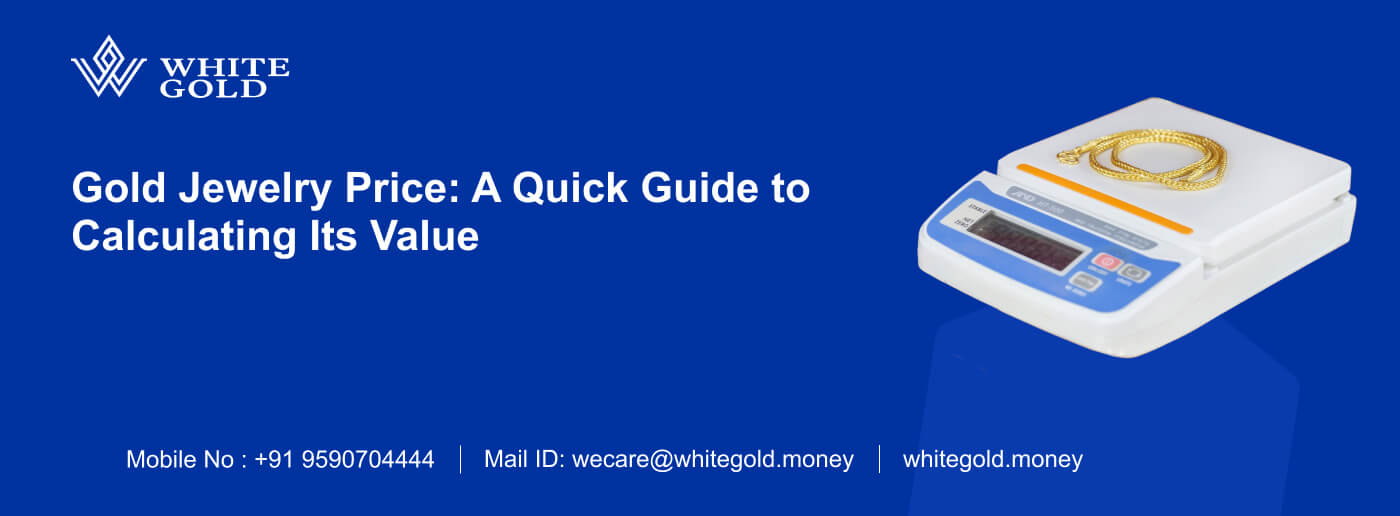How to Calculate Gold Rate Accurately in 2025

5min read

Buying gold is something almost every Indian does at some point. But have you ever looked at your bill and wondered, “Wait, how did we go from ₹5,500 per gram to ₹62,000 for this bangle?” We’ve all been there.
If you have bought gold before, you have probably heard about making charges and GST. It will vary from one jeweller to another. The gold price calculation might seem complicated. But it doesn’t have to be. In fact, you have to understand how to calculate gold rate — just to make sure you are being charged fairly for the jewellery you are buying.
What Decides the Gold Price?
Before you delve into how to calculate gold price, let’s start with the basics. Ever thought why the gold price changes so often? Who is deciding the gold price? A few big things will decide how much gold costs on any day. Here’s the simple breakdown:
Price of Gold Around the World
Gold is bought and sold all over the world. The starting price is usually set in US dollars, based on global trading. This is the base.
Rupee vs. Dollar
India buys most of its gold from other countries. So if the Indian rupee gets weaker compared to the US dollar, gold becomes costlier for us.
Import Tax and GST
When gold is brought into India, there are extra charges like import tax and GST. These charges are added to the price you see at the jewellery store.
Festive and Wedding Season
During festivals like Diwali and Akshaya Tritiya, lots of people buy gold. So the demand goes up — and sometimes, the price does too.
Purity of Gold
Pure gold is 24 Karat, but most jewellery is made with 22K gold. As purity increases, the price of gold will also increase.
💡Quick Tip: When you see “916” stamped on jewellery, it means 91.6% pure = 22K gold.
How Jewellers Calculate Gold Jewellery Price
Here comes the real question: How jewellers calculate gold price? How is the final gold price calculated when you buy a piece of jewellery? It is just simple math.
All you have to do is, multiply the current gold price per gram by the gold’s weight. Then, add making charges which usually include wastage. Apply 3% of GST to the subtotal. This gives you the final jewellery price.
Final Gold Rate = (Gold Price/ Gram × Weight) + Making Charges + GST
Let’s break this down into small steps:
Gold Rate
This is the price of 1 gram of gold on the day you are buying, which denotes the live gold rate. Usually, we all buy 22K gold, in which most of the jewellery is made. Jewellers often display this rate at their stores and on their websites. You can also check it on trusted gold rate apps.
Weight of the Jewellery
This is the total weight of the item you are buying. It might be a ring, chain, or bangle. It is usually measured in grams. Gold price is always calculated by multiplying the rate with the weight.
Making Charges
This is the fee for designing, crafting, and finishing your jewellery. Think of it like a labour charge. Someone actually made that beautiful piece you are buying. It’s not included in the gold price. It is added on top. Jewellers can charge this in two ways:
– As a percentage of the gold price. It is usually 8% to 20%.
– Or a flat fee of around ₹300–₹1,000 per gram.
- “Isn’t 8% a lot?”
Yes — and this is where comparing prices from different jewellers helps. The same ring may cost much less at another store due to lower making charges.
GST
Once the gold value and making charges are added up, 3% GST is applied to the total amount. This is a standard government tax and applies to all gold purchases across India. GST should be shown separately on your bill.
Let’s Understand With a Real Example
Imagine you are buying a 10 gram gold chain, and the live gold rate is ₹5,500 per gram.
Your jeweller says the making charges are 10%. Here is a detailed breakdown of how to calculate gold price. Let’s calculate the final price together.
| Component | Price |
| Gold rate (per gram) | ₹5,500 |
| Weight of the jewelry | 10 grams |
| Gold value | ₹5,500 × 10 grams = ₹55,000 |
| Making charges (10%) | 10% of ₹55,000 = ₹5,500 |
| Sub total | ₹60,500 (Gold + Making Charges) |
| GST (3%) on Sub total | 3% on ₹60,500 = ₹1,815 |
| Final price | ₹62,315 |
✅ Pro Tip: Always ask the jeweller to show you this full breakdown. It will help you understand exactly what you are paying for.
What about Wastage Charges?
Now, you might be a little confident about how to calculate gold price for jewellery. But here is a quick check – the wastage charges. When a jeweller makes a gold chain or ring, a small amount of gold can get lost during the process — like while melting, cutting, or polishing. This is called wastage, and some jewellers add it as an extra charge.
Let’s take an example. You are buying a chain that weighs 10 grams. The jeweller says there is 5% wastage:
Wastage Percentage = [(Initial Weight – Final Weight) / Initial Weight] * 100. This is how the wastage percentage is calculated.
Wastage = 10g × 5% = 0.5g
So, you will be billed for 10g + 0.5g = 10.5g of gold
Even though your chain weighs only 10g, your final bill is calculated for 10.5g.
✅ Some jewellers show this charge separately, others bundle it with making charges. Always ask, _“Is the wastage already included in the making charges?”_ and get a clear price breakup.
How to Know You’re Not Being Overcharged
Let’s be honest — most of us walk into a jewellery store, choose a design we like, and just pay the final amount. We believe that it will be a fair price only. But if you know how to calculate gold rate, you can shop smarter. Here are simple steps that help you make sure you are paying the right price for your gold jewellery:
Always Check the Live Gold Rate
Before you enter a store, check the live gold rate online. Prices can vary daily, and knowing the gold price updates helps you bargain better.
Only Buy BIS Hallmarked Gold
This is the gold standard for purity in India. BIS Hallmark ensures you are not being charged 22K prices for something that’s only 20K. Just look for the tiny hallmark stamp on your jewellery. It is proof that the gold is verified and genuine.
Ask for a Detailed Bill
Having knowledge of how the gold rate is calculated is a great advantage — helping you make wise investments. Making charges can vary from 8% to even 20%, depending on the design and store.
Always ask for the percentage or flat rate. It is absolutely okay to visit 2–3 stores and compare — especially for bigger buys.
Compare Making Charges
Don’t settle for a one line total. Ask your jeweller for a complete breakdown showing:
– Gold rate per gram
– Weight of the jewellery
– Making charges
– 3% GST
This will help you understand exactly where your money is going.
Clarify About Wastage Charges
Some jewellers add a “wastage” component. This will be included in the making charges. Always ask: _“Is wastage included in making charges or separate?”
It will keep things transparent.
Don’t Be Shy to Negotiate
Jewellers are often open to adjusting the making charges if you ask politely. So, never be shy about bargaining, especially when buying wedding sets or multiple items. After all, a small negotiation could save you thousands of rupees.
Final Thoughts – Make Every Gram Count
Buying gold shouldn’t feel like solving a math puzzle — and now, it doesn’t have to be. It might be a dainty 1g ring or a 100g investment piece. You should have a basic understanding of how to calculate gold rate. It will help you to shop smart and avoid surprises on the bill.
You work hard for your money — so your gold should be worth every rupee you spend. Get real time prices and full transparency when selling gold with White Gold- your go-to choice for smarter gold decisions.
FAQs – Answering What Buyers Often Ask
1. How is the gold rate calculated in India?
Gold prices in India are based on international gold prices, the rupee dollar exchange rate, import duties, and local demand.
2. How do jewellers finalize gold jewellery prices?
They calculate the gold value by multiplying rate and weight. Then they will add making charges with the sub total and then apply 3% GST to get the final price.
3. How much is 1kg gold price in India?
It varies daily. Multiply the live gold rate per gram by 1,000. For example, if the live gold price is ₹5,500, calculate it like 5,500 × 1,000 = ₹55,00,000.
4. How do I know if I’m being charged fairly?
Compare live gold rates and ask for a detailed bill. Cross-check the charges with multiple jewellers.







